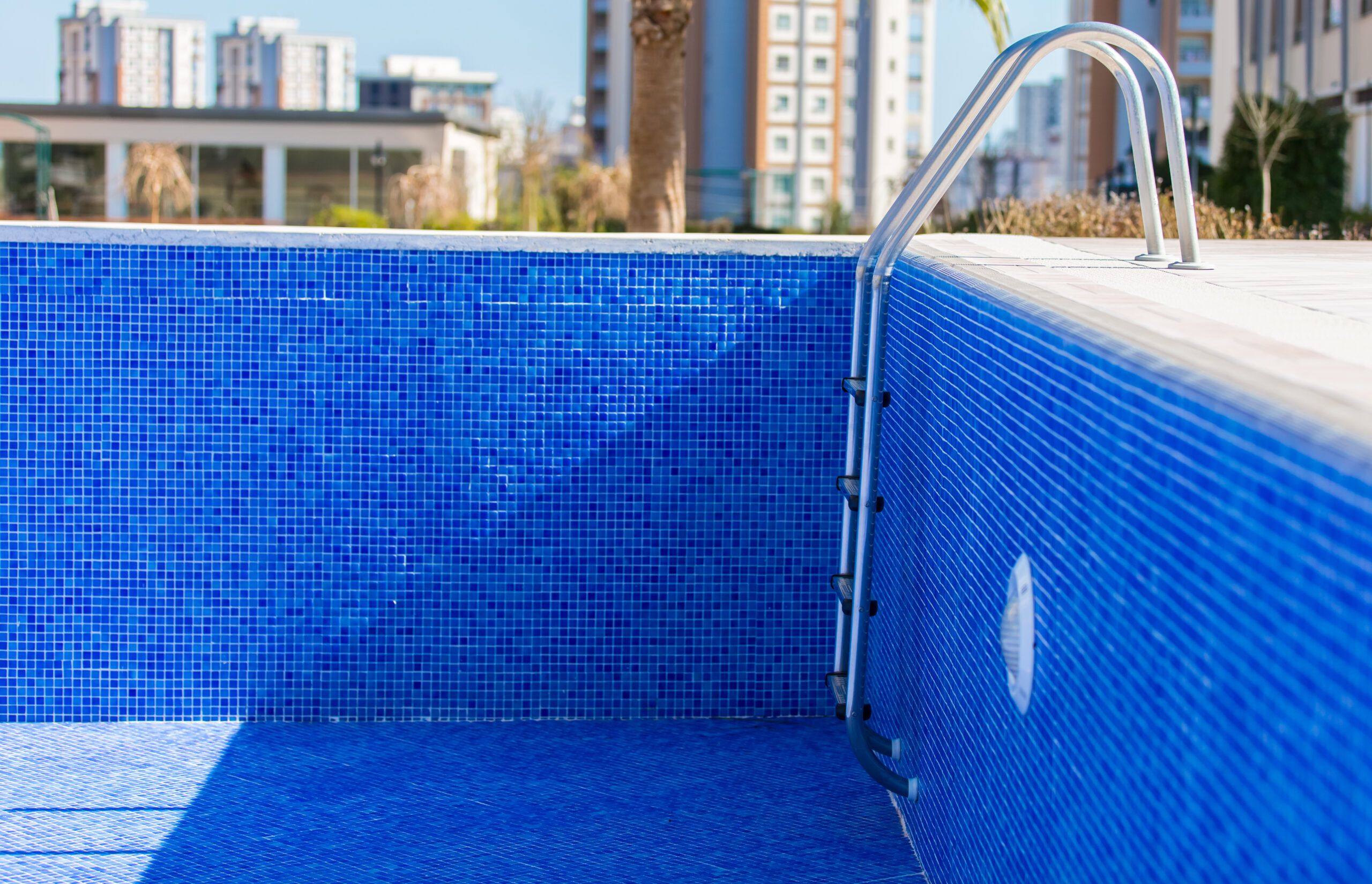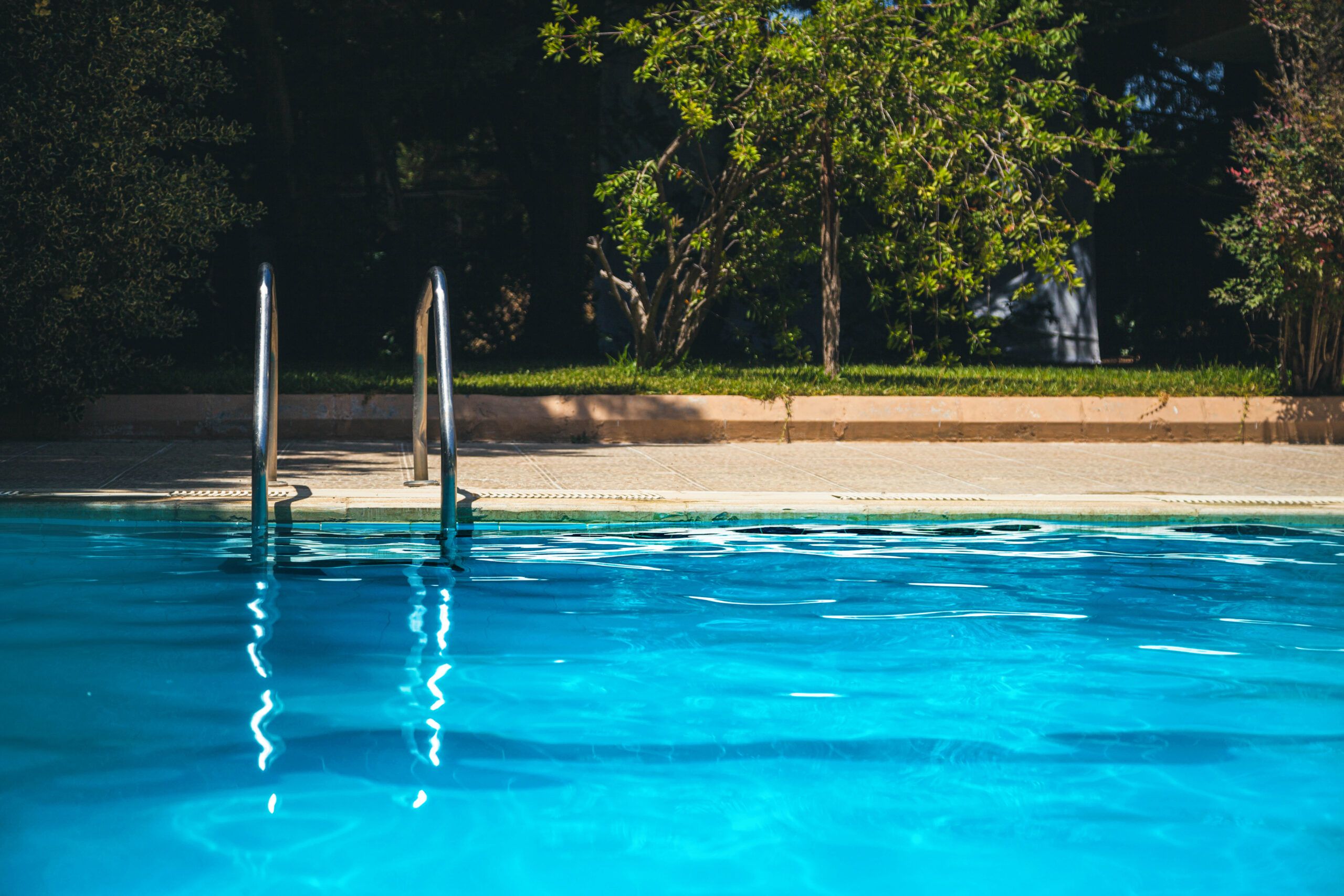Pools need to be drained every few years for reasons such as repairs, addressing water quality issues, or routine maintenance. Knowing how to properly drain your pool can prevent damage and costly errors while saving you time and hassle. We walk you through the process below, from understanding when to drain your pool to the steps involved in safely emptying both above-ground and in-ground pools.
Common Reasons for Draining a Pool
There are several situations that make pool draining necessary, such as these common scenarios:
- Major repairs or renovations
- Preparation for winter
- Routine maintenance (typically every few years)
- Severe water quality issues
- Structural problems
Ideal Timing for Pool Drainage
Timing matters when draining your pool. The best time to drain a pool is during mild weather conditions, typically in spring or fall. Avoid draining your pool during extreme temperatures or rainy seasons. Summer heat can damage empty pool surfaces, and winter’s frozen ground can cause “pool pop” in empty pools. Rainy seasons increase the risk of hydrostatic pressure issues.
Aim for a period of dry weather with daytime temperatures below 85 degrees Fahrenheit for best results.

Tools and Materials for Draining a Pool
To drain your pool effectively, you’ll need the following:
- Garden hoses (enough to reach from the pool to the drainage point)
- Hammer
- Large pliers
- Replacement hydrostatic plugs (for in-ground pools)
- Screwdriver or chisel
- Submersible pump (available for purchase or rent)
- Sump-pump to garden hose adapter
Safety Gear and Precautions
Safety should be your top priority when draining a pool. Wear nonslip shoes, gloves, and eye protection. Have a helper nearby for assistance and safety. Always follow electrical safety guidelines when using pumps and avoid using extension cords near water.
Preparing Your Pool for Drainage
Preparation involves consulting local authorities and checking weather conditions. Adequate planning will help you avoid potential issues and ensure a smoother process.
Consulting Local Water Authorities
Before you start draining your pool, you need to check with your local water authority. Many municipalities have specific regulations regarding pool drainage, including where you can discharge pool water, chemical composition requirements for discharged water, and timing restrictions for pool drainage.
Failing to comply with local regulations can result in fines or other penalties, so understand and follow the rules in your area. These regulations help protect the environment and local infrastructure.
Checking Weather Conditions
Monitor the weather forecast before and during the draining process. Ideal conditions are dry weather for several days before and after draining, moderate temperatures (between 50 and 80 degrees Fahrenheit), and low humidity.
Avoid draining your pool if rain is expected, as this can lead to hydrostatic pressure issues and potential damage to your pool’s structure.
How To Drain an Above-Ground Pool
Draining an above-ground pool is generally simpler than draining an in-ground pool. Follow these steps for a safe and effective process.
Setting Up the Drainage System
Unplug all electrical components, including the pool pump and any automatic timers. Attach garden hoses to reach from the pool to the approved drainage point. Connect the hoses to your submersible pump. Lower the pump into the deepest part of the pool. Plug the pump into a GFCI outlet near the pool.
Monitoring the Draining Process
Start the pump and check that water is flowing properly at the drainage point. Monitor the process regularly, ensuring the pump doesn’t run dry. As the water level drops, move the pump to the lowest point in the pool. Once the water level is too low for the pump, use a shop vac or sponges to remove remaining water.
Draining a pool can take up to 14 hours, so plan accordingly and never leave the process unattended for long periods. Having someone help you can make this job easier and more efficient.
How To Safely Drain an In-Ground Pool
Draining an in-ground pool requires extra care due to the risk of structural damage. Follow these steps.
Removing Water and Avoiding Damage
Turn off all pool equipment, including pumps, lights, and automatic systems. Set up your submersible pump and hoses as described for above-ground pools. Begin pumping water from the deepest part of the pool. Monitor the process constantly, moving the pump as needed. When the water level is too low for the pump, prepare to address hydrostatic pressure.
Dealing With Hydrostatic Pressure
Hydrostatic pressure is a significant concern when draining in-ground pools. To mitigate this risk, locate the hydrostatic plugs in the pool floor, usually in the deep end. Use a hammer and screwdriver to carefully break the plaster covering the plugs. Remove the plugs using large pliers, allowing groundwater to enter the pool.
Continue pumping out this water as it enters. Replace the hydrostatic plugs before refilling the pool.
This process relieves underground pressure and helps prevent “pool pop.” Understanding how to manage hydrostatic pressure ensures your pool remains structurally sound.
Understanding and Preventing “Pool Pop”
“Pool pop” occurs when underground pressure forces an empty in-ground pool upward, causing severe structural damage. To prevent this, do the following:
- Drain pools only during dry weather when the water table is low.
- Always remove hydrostatic plugs when draining in-ground pools.
- Never leave an in-ground pool empty for extended periods.
- Refill the pool as soon as possible after completing maintenance or repairs.
Protecting Pool Surfaces During Drainage
Empty pools are vulnerable to surface damage, especially in hot weather. To protect your pool, do the following:
- Avoid draining during extremely hot or cold weather.
- Keep the pool surface damp if it must remain empty for more than a day.
- Cover the pool to protect it from debris and sunlight.
- Complete any necessary repairs or cleaning quickly to minimize exposure time.
Post-Drainage Maintenance and Refilling
Once you’ve successfully drained your pool, address any maintenance needs and properly refill it. Taking the time to perform these tasks ensures that your pool remains in good condition.
Cleaning and Repairs
Take advantage of the empty pool to handle these maintenance activities:
- Clean the pool surfaces thoroughly.
- Inspect for cracks or damage.
- Repair any issues found.
- Replace old or worn equipment.
Doing a thorough inspection and cleaning can prevent future issues and keep your pool in top shape.
Proper Refilling Techniques
When refilling your pool, replace all hydrostatic plugs in in-ground pools. Use a garden hose to start filling the pool. Add water slowly to avoid disturbing any new repairs or surface treatments. Begin balancing chemicals when the pool is about 75% full. Run the filtration system once the pool is full to ensure proper circulation.
Proper refilling techniques help maintain water quality and prevent any damage to the pool structure.

